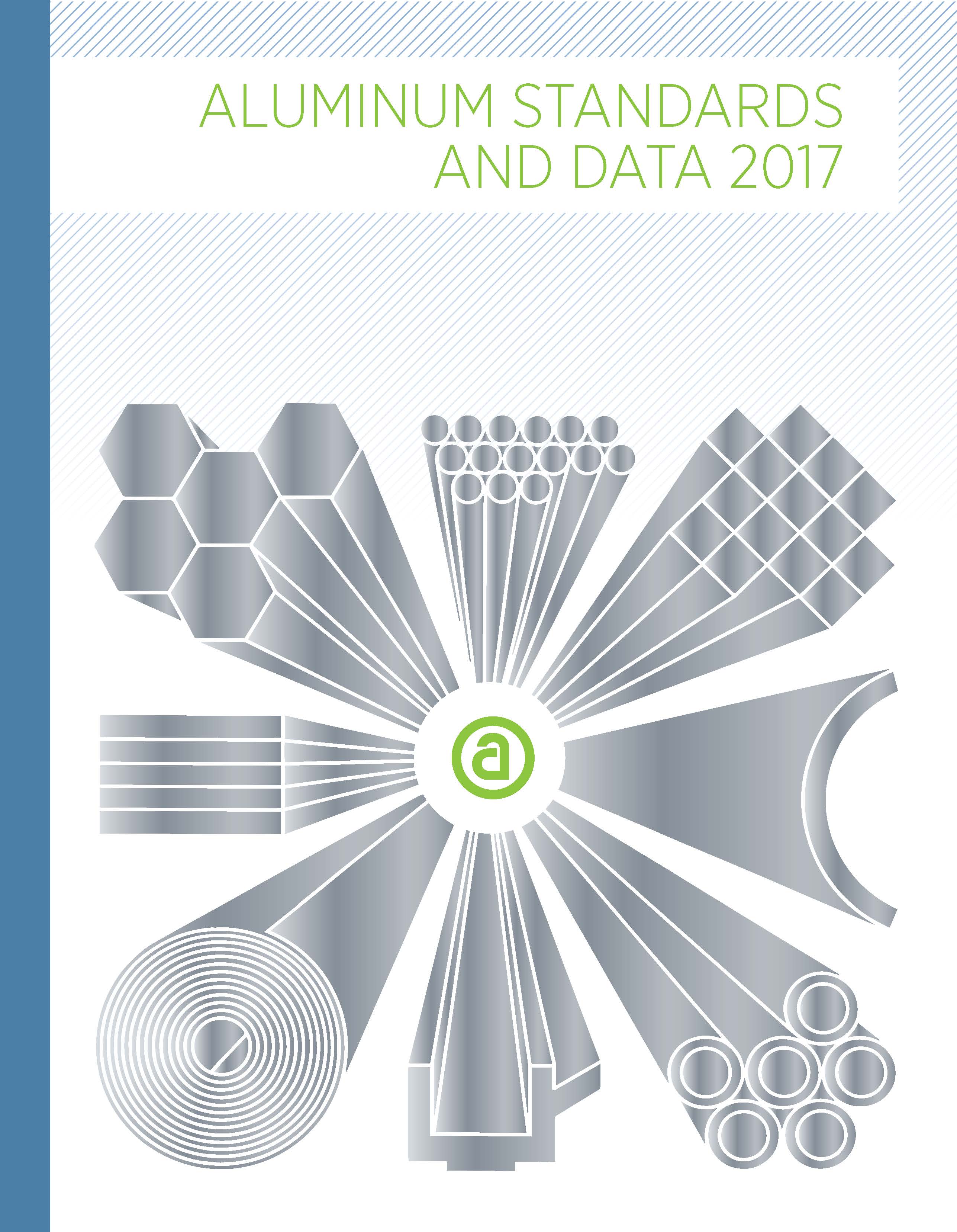 Aluminum Standards and Data 2017: U.S. Customary Edition
Aluminum Standards and Data 2017: U.S. Customary Edition
Publisher: The Aluminum Association, Inc. (©2017)
Reviewed by Joseph C. Benedyk, Editor
Aluminum Standards and Data 2017: U.S. Customary Edition was published on June 1, 2017 by the Aluminum Association. First published in 1955, Aluminum Standards and Data (AS&D) is recognized as the oldest, most popular, and most comprehensive guide for producers and users of aluminum. The updated AS&D 2017 replaces the last version published in 2013.
Regular updating of the AS&D is done by the Association’s Technical Committee on Product Standards (TCPS), mainly to reflect changes in the industry. Members of this committee work in the industry and are exposed to changes there, so are best suited to understand what changes need to be made to keep it current. For AS&D 2017, this challenging task was accomplished over the last four years by 27 members of the TCPS, chaired by Francine Bovard of Arconic and including some two dozen technical experts from major aluminum member companies, as well as Debra Weston, Ladan Bulookbashi, Francesca Licari, and John Weritz of the Aluminum Association.
Indeed, the 250+ page AS&D 2017 speaks for itself. Its layout and table of contents mirror that of previous versions, with 16 main sections covering general information, typical properties, standards, etc. followed by ten chapters each dealing with a given aluminum and aluminum alloy product, from sheet and plate to electrical conductors. In such a widely read and used reference guide, the ease of finding needed information with a familiar layout is facilitated. I have worked with technicians and engineers in the aluminum industry who could just open their copy of the AS&D to the page they often needed; some even had the chemical, mechanical, and tolerance specifications memorized. In any case, the index, as usual, is excellent and well organized for browsing or immediate need-to-know information.
The general features of AS&D 2017 contain information on terminology, chemistry, physical and mechanical properties, tolerances, limits, comparative characteristics, and standards related to the most common aluminum alloys and product forms. The Association’s purpose here is to provide aluminum users and producers with the latest information on commonly used aluminum mill product requirements and to establish a standard platform for discussions among customers and producers to help select the best solution to meet engineering design requirements.
The Association notes that the U.S. and foreign based companies in the aluminum industry within the U.S. create $186 billion annually in economic activity, with the AS&D serving them as a reference and guide. The information is meant to be universal for all working in the industry, as it includes tabulated cross references to wrought alloy foreign designations and mill product specifications approved by various agencies. In many ways, past editions and the up-to-date AS&D 2017 provide a balance between the needs and desires of customers and what can be delivered productively by aluminum mills.
The hallmarks of this 2017 edition are the changes to the 2013 edition (around 170 changes were counted in the chronological summary that provides description, location, and date for each), all of which are indicated by highlights in the text. The changes or updates help ensure industry wide acceptance of definitions, designations, alloy and product characteristics, and provide a uniform vocabulary and language between aluminum supplier and user. Some of the major changes to the AS&D 2017 include:
- Additions to the color code list for easy identification of aluminum mill products
- Latest popular new alloys
- Comprehensive chart of chemical composition limits
- Mechanical property limits for commonly produced mill products
- Better, detailed reference illustrations for tolerances
- Simplified use of non-bilateral tolerances to ensure industry-wide acceptance
- Latest 2017 American National Standards Institute standards – (ANSI) H35.1, H35.2, and parts of H35.4
Aside from these updates, the most distinctive difference noticeable in the AS&D 2017 compared with previous versions is the improved readability, thanks to a new font, text size, and clear illustrations.
I spoke with the Association’s John Weritz, vice president of Standards and Technology, about some issues I had with the AS&D 2017 — specifically the fact that some of the new automotive extrusion and sheet alloys were not included. Considering that the automotive market is fast competing with the aluminum building and construction (B&C) market for the lead industry sector and that several members of the TCPS who participated in writing the AS&D 2017 belong to companies that have developed these new automotive alloys, why not include data on some of the wrought aluminum alloys that are making this market happen? He pointed out that one of the criteria for alloy inclusion in the AS&D 2017 is that the wrought aluminum alloys should be available from multiple producers, which is more easily done in more mature aluminum markets.
At the same time, Weritz mentioned how the Association’s Aluminum Transportation Group (ATG), well known through their Drive Aluminum website (www.drivealuminum.org), addresses the automotive market and works with him and the TCPS on a regular basis. Members of the ATG work directly for aluminum companies involved in this rapidly changing automotive market and are better able to address issues relating to new alloys, processes, and specification. However, he notes, “Although some of the alloys in the AS&D 2017 are known and used in automotive applications, that market is evolving so quickly that when these new alloys become more established and ready for other industries to incorporate into their products, that’s when we will include them in AS&D 2017.”
Editor’s Note: Both the U.S. and metric versions of Aluminum Standards and Data 2017 can be purchased as a download or a hard copy from the Association’s bookstore at: www.aluminum.org/bookstore. It should be noted that the Aluminum Association cautions against multiple conversions between U.S. customary and metric (SI) units and vice versa as significant errors may arise.
This book review was first published in the October 2017 issue of Light Metal Age.
